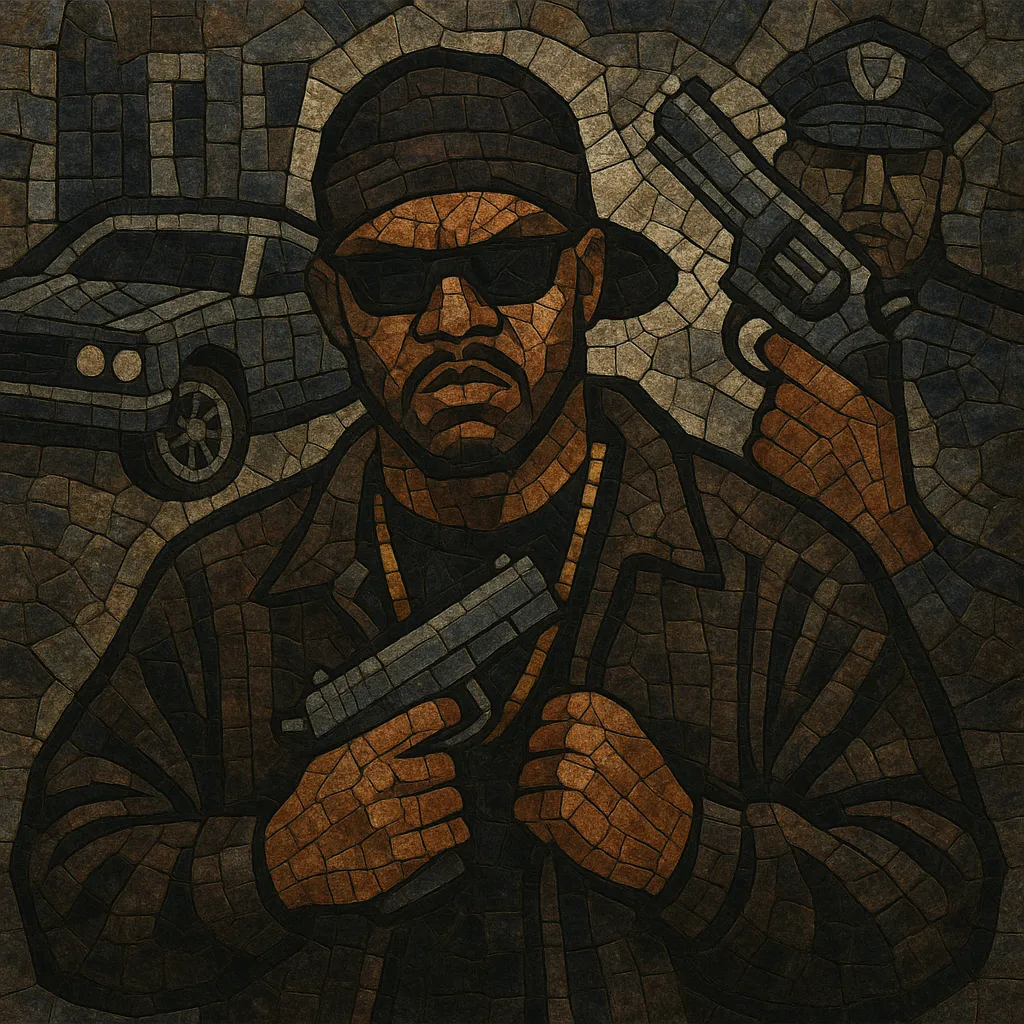
Gangsta rap is a subgenre of hip hop defined by its gritty, street-level storytelling, first‑person narration, and unflinching depictions of crime, policing, poverty, and survival. It foregrounds a hard-hitting vocal delivery over sparse, heavy drum programming and sample-based grooves.
Musically, it draws from the foundational elements of hip hop—looped breaks, funk basslines, and turntable aesthetics—while emphasizing menace, swagger, and cinematic detail. Lyrically, it alternates between reportage, braggadocio, social commentary, and personal testimony, often sparking controversy for its explicit content and political provocations.
From mid‑1980s origins through the 1990s mainstream, gangsta rap reshaped both the sound and business of hip hop, influencing fashion, language, and global perceptions of urban America.
Gangsta rap emerged in the mid‑1980s as rappers began to document street realities with unprecedented directness. Pioneering recordings such as Schoolly D’s “PSK What Does It Mean?” (1985) and Ice‑T’s early singles (1986–1987) blended electro-derived beats with stark, first‑person narratives. These tracks established the core aesthetics: tough, minimal drum machines, funk-informed loops, and a reportorial lyrical stance.
N.W.A’s Straight Outta Compton (1988) marked gangsta rap’s national breakthrough, pairing abrasive production with confrontational social critique and anti‑establishment rhetoric. The group’s success—and controversy, including law-enforcement backlash—helped define the subgenre’s provocative identity. In the early 1990s, Dr. Dre’s The Chronic (1992) shifted the sound toward smoother, funk-saturated production (precursor to G‑funk), while Snoop Dogg’s Doggystyle (1993) translated that style into massive mainstream appeal.
While much of the spotlight focused on the West Coast, East Coast artists integrated gangsta themes with boom bap production. The Notorious B.I.G. (Ready to Die, 1994) and Mobb Deep (The Infamous, 1995) crafted cinematic, detail-rich narratives over dark, minimal beats, intertwining gangsta subject matter with East Coast sonic signatures and the emerging mafioso mode.
Gangsta rap provoked political scrutiny and public debate around censorship, free speech, and representation, even as it became a commercial juggernaut. Labels and artists built multimedia empires, set fashion trends, and influenced global youth culture. The mid‑1990s also saw tragic escalations of coastal rivalries, culminating in the murders of Tupac Shakur and The Notorious B.I.G., events that reshaped industry dynamics and public discourse.
Gangsta rap’s storytelling techniques, vocal cadences, and thematic palette informed Southern hip hop, trap, horrorcore, and later drill scenes. Artists like 50 Cent reintroduced gangsta ethos to early‑2000s pop charts, while subsequent generations adapted the template to new regional contexts and production technologies. Today, gangsta rap’s DNA persists in the global hip hop mainstream—sonically via heavy low end and funk indebtedness, and narratively via vivid, firsthand street reportage.

